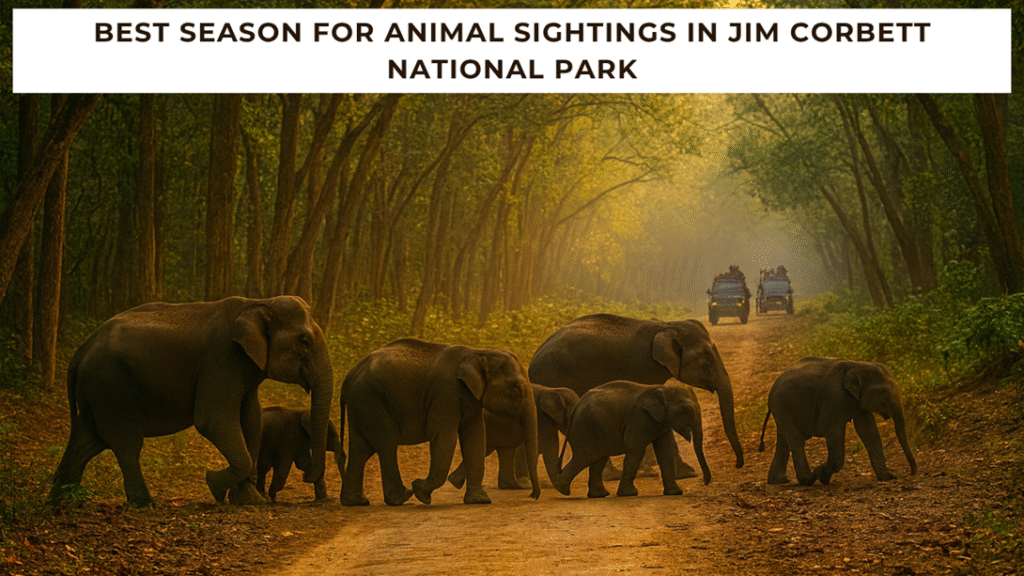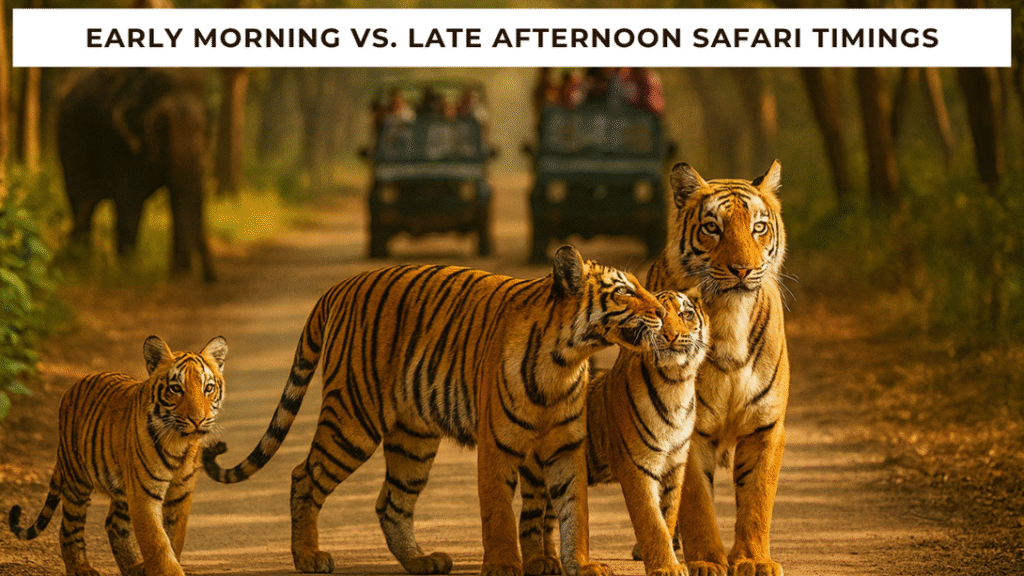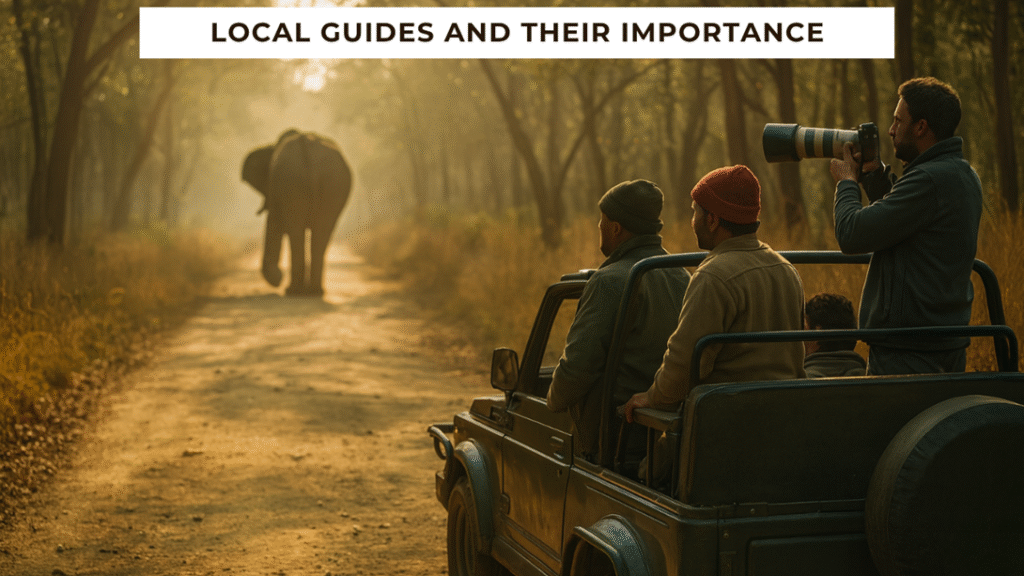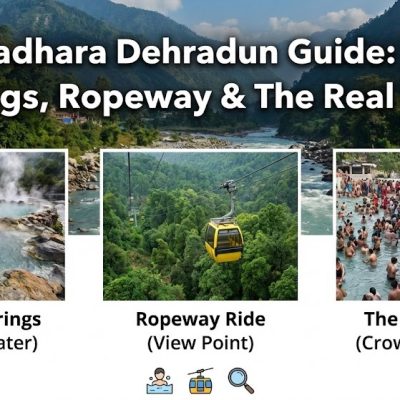Table of Contents
- What is the Best Time to Visit Jim Corbett National Park for Tiger Sightings?
- About Jim Corbett National Park
- Why Tiger Sightings Are a Major Attraction
- Overview of Wildlife in Jim Corbett National Park
- Best Season for Tiger Sightings in Jim Corbett National Park
- 5.1 November to June: Tiger Safari Season Explained
- 5.2 Peak Winter Months: November to February
- 5.3 Summer Months: March to June
- 5.4 Monsoon Season: July to September
- Early Morning vs. Late Afternoon Safari Timings
- How Dry Season Affects Tiger Visibility
- Waterholes and Tiger Sightings
- Best Zones for Tiger Sightings in Jim Corbett National Park
- 9.1 Dhikala Zone
- 9.2 Bijrani Zone
- 9.3 Jhirna Zone
- 9.4 Durga Devi Zone
- Choosing the Right Safari Type: Jeep, Canter, or Trek
- Safari Booking Tips for Peak Season
- Photography Tips During Tiger Safari
- Safety Precautions While Spotting Tigers
- Local Guides and Their Importance
- How Weather Impacts Tiger Sightings
- Planning Your Trip Around Festivals or Holidays
- Wildlife Conservation Awareness During Visits
- Experience the Wild Like Never Before with Clan Stays in Corbett
What Is the Best Time to Visit Jim Corbett National Park for Tiger Sightings?
The best time to visit Jim Corbett National Park for tiger sightings is from November to June, when the park remains open for safaris. The dry season (March to June) is especially ideal because tigers are often found near water sources, making sightings easier.
Early mornings and late afternoons are the most active times of day to spot these majestic animals. Avoid the monsoon season, as the park remains closed and tiger sightings are rare.
About Jim Corbett National Park
Jim Corbett National Park, located in Uttarakhand, is India’s first national park. It is renowned for its population of Bengal tigers, along with elephants, leopards, and deer. The park’s landscape—filled with dense forests, flowing rivers, and rolling hills—makes it one of the most scenic wildlife destinations in India.
Visitors can enjoy jeep safaris, bird watching, and nature photography here. The park is open from November to June, which also marks the best time for tiger sightings.
Why Tiger Sightings Are a Major Attraction
Tigers are powerful, majestic, and elusive creatures, and spotting one in the wild is a thrilling experience. Jim Corbett National Park has a healthy tiger population, making it one of the best places in India for tiger sightings.
For many, seeing a tiger in its natural habitat is a once-in-a-lifetime experience. The safaris are not just about adventure but also about connecting with nature. With the help of trained guides, visitors can safely and responsibly enjoy watching tigers and other wildlife.
Overview of Wildlife in Jim Corbett National Park
Jim Corbett is home to a diverse range of wildlife, making it one of India’s top wildlife tourism destinations. Apart from the Bengal tiger, visitors can see leopards, elephants, deer, wild boars, and sloth bears.
It’s also a paradise for bird watchers, boasting over 600 species of birds, including eagles, kingfishers, and owls. The park’s rivers, grasslands, and forests provide the perfect natural habitat for these creatures, and guided safaris ensure a safe and educational experience.

Best Season for Tiger Sightings in Jim Corbett National Park
The best time to see tigers in Jim Corbett is between November and June, when the park is open for visitors. During March to June, water sources shrink, and tigers can be spotted more easily near rivers or ponds.
Early mornings and late afternoons are the best safari times for tiger sightings. While winters are comfortable and cool, the summer months provide better visibility as the grass is shorter. Visiting during this period ensures the highest chances of spotting wildlife.
5.1 November to June: Tiger Safari Season Explained
From November to June, the weather is pleasant and perfect for exploring the park. Between March and June, tigers are often seen near waterholes, making this period the peak safari season.
Safaris operate twice a day — early morning and late afternoon — providing visitors with ample opportunity to explore. The park remains closed during the monsoon season (July–October) due to safety and preservation concerns.
5.2 Peak Winter Months: November to February
The winter months offer cool weather and clear skies, ideal for comfortable safaris. During this season, animals are active throughout the day, and the crisp air enhances visibility.
Photographers love this time for its soft lighting and vibrant natural backdrops, making it one of the most enjoyable periods to visit the park.
5.3 Summer Months: March to June
Summer is warm and dry, but it’s the best time for tiger sightings. As water sources dry up, animals frequently visit rivers and ponds, making them easier to spot.
The clear skies and golden sunlight are great for wildlife photography. However, since it’s peak season, tourists should book safaris well in advance.
5.4 Monsoon Season: July to September
The monsoon season brings lush greenery, flowing rivers, and waterfalls, transforming the park into a paradise for nature lovers. However, heavy rains make roads unsafe, and safaris are closed during this time.
Although tiger sightings are rare in this season, the scenic beauty attracts photographers and travelers seeking peace and solitude.

Early Morning vs. Late Afternoon Safari Timings
Both early morning (6:00 AM–10:00 AM) and late afternoon (3:00 PM–6:00 PM) safaris offer unique experiences.
- Morning safaris provide cool weather and higher animal activity near water sources.
- Evening safaris are perfect for photography as the soft light enhances the beauty of the jungle.
Choosing between them depends on your comfort and interests, but both timings offer great wildlife visibility.
How Dry Season Affects Tiger Visibility
During the dry season (March–June), water becomes scarce, and tigers are drawn to remaining rivers and ponds. The sparse grass and clear weather improve visibility, making it easier to spot animals.
This season also provides excellent lighting for photography, making it one of the most rewarding times to visit Jim Corbett.
Waterholes and Tiger Sightings
Waterholes are prime locations for tiger sightings. Tigers often visit them to drink or cool off, especially in summer.
Safari guides take visitors to these strategic spots early in the morning or late in the afternoon, increasing the chances of witnessing a tiger in the wild — an unforgettable experience for any traveler.

Best Zones for Tiger Sightings in Jim Corbett National Park
Dhikala Zone
The Dhikala Zone is the most famous and wildlife-rich part of the park. With vast grasslands, dense forests, and flowing rivers, it offers the highest chances of tiger sightings. It’s also home to elephants, leopards, deer, and numerous bird species.
Bijrani Zone
Known for frequent tiger sightings, the Bijrani Zone combines open grasslands and forests. It’s easily accessible, ideal for photography, and perfect for early morning or late afternoon safaris.
Jhirna Zone
Located in the southern region, Jhirna Zone remains open throughout the year. It’s especially good for summer safaris when animals come closer to water sources. With fewer crowds, it offers a peaceful safari experience.
Durga Devi Zone
The Durga Devi Zone is serene and less crowded, ideal for those seeking tranquility. Dense forests and quiet trails make it excellent for spotting tigers, elephants, and leopards in a natural setting.
Visiting these zones with an experienced guide ensures safety and maximizes your chances of tiger sightings.
Choosing the Right Safari Type: Jeep, Canter, or Trek
- Jeep Safari: Most popular option, perfect for families and small groups. Offers flexibility and close-up wildlife encounters.
- Canter Safari: Larger vehicle ideal for groups or photographers who want better visibility and shared experiences.
- Trek Safari: Best for adventure seekers who want to explore nature on foot (only in certain areas and with trained guides).

Jim Corbett Safari Booking Tips for Peak Season
- Book Early: Reserve online or through registered operators.
- Pick the Right Zone: Dhikala and Bijrani fill up fast.
- Choose Safari Type: Decide between jeep, canter, or trek in advance.
- Confirm Timings: Morning and afternoon safaris are most popular.
- Pack Essentials: Comfortable clothing, camera, binoculars, and water.
Photography Tips During Tiger Safari
- Use a zoom lens for close shots.
- Capture photos during early morning or golden hour.
- Keep your camera ready — wildlife moves fast!
- Stay quiet and patient to avoid disturbing animals.
- Include natural elements like trees and rivers for depth.
Safety Precautions While Spotting Tigers
- Always stay inside the vehicle.
- Follow your guide’s instructions carefully.
- Keep quiet and avoid sudden movements.
- Do not feed animals or use flash photography.
- Maintain a safe distance at all times.
- Wear neutral-colored clothes (green, brown, khaki).
- Carry essentials safely and keep belongings inside the vehicle.

Local Guides and Their Importance
Local guides enhance your safari experience with their deep knowledge of animal behavior and park routes.
They can interpret tracks and sounds, ensuring you reach the best spots for sightings. Hiring them not only guarantees safety but also supports local livelihoods and promotes responsible tourism.
How Weather Impacts Tiger Sightings
- Dry Season (Mar–Jun): Easier sightings as tigers stay near water.
- Winter (Nov–Feb): Cool weather makes animals more active.
- Monsoon (Jul–Sep): Dense forests and slippery roads reduce visibility.
Regardless of the season, early mornings and late afternoons remain the most rewarding safari times.
Planning Your Trip Around Festivals or Holidays
Visiting during holidays like Diwali, Christmas, or summer vacations can be exciting but crowded.
Book safaris and accommodations well in advance, and consider combining your trip with local festivals in Ramnagar for a cultural touch. Avoid the monsoon months, as the park remains closed.
Wildlife Conservation Awareness During Visits
Visiting Corbett is not just about adventure — it’s also about protecting nature.
- Follow park rules and stay on marked trails.
- Avoid littering and never feed wildlife.
- Support conservation by hiring local guides and staying at eco-friendly lodges.
- Observe animals calmly and share awareness about wildlife protection.
- Avoid using flash while photographing animals.
Experience the Wild Like Never Before with Clan Stays in Corbett
Experience the wild like never before with Clan Stays in Jim Corbett. Enjoy comfortable stays near top safari zones, delicious meals, guided jungle walks, and serene jungle views.
Our local team ensures a personalized and safe adventure, making your trip smooth and unforgettable. With Clan Stays, you’ll discover the perfect balance of comfort, nature, and excitement in the heart of Corbett.






